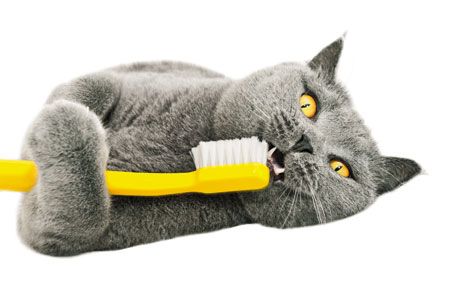Dentistry holds fangtastic potential
Veterinary practices are turning to dentistry as a way to replace lost spay and neuter revenue and encourage regular visits. Heres how to get started.

Jiri Foltyn/Shutterstock.comAfter practicing 46 years at the same hospital, the owner of a clinic in California realized his team needed to shift its focus. Spays and neuters had been a main source of income for most of his career, but with more and more clients taking their pets to the Humane Society and to low-cost spay/neuter clinics for the procedures, the owner needed a way to replace the lost income. His answer? Dentistry.
This clinic's situation isn't an anomaly. It's becoming the norm. Practices across the country are turning to dentistry as a way to replace lost spay and neuter revenue and encourage regular visits.
The potential is huge. Good oral care can improve the human-animal bond and may contribute to a longer life for the pet. Consider the fact that while about 80 percent of the patients entering your veterinary hospital have some degree of dental disease, around only 14 percent get the care they need to treat it.1,2 And because the treatment and prevention of dental disease requires consistent collaboration between clients and veterinary teams, dentistry provides your practice with a hook for regular visits.
How to shift your practice's periodontal paradigm:
Get proper tooth training and tools. Dogs have 42 teeth, and cats have 30. Consider each tooth a patient, and you'll have a better grasp on the amount of time and effort good dentistry requires. Train your team to perform safe, efficient dental cleanings. Invest in a dental radiograph machine and learn how to use it as well as how to interpret radiographs. Encourage continuing education in proper techniques.
Slow down and talk teeth. Don't rush through appointments. Setting a goal to merely increase the number of dental procedures you do each day is the wrong approach. Instead, train your team how to communicate with clients about dentistry. Empower and encourage them to spend time with clients to help them understand how routine home care and regular professional COHATS (Comprehensive Oral Assessment and Treatment) can affect their pets' long-term health. Performing fewer dental procedures each day but doing a better job and charging accordingly will boost both revenue and morale, and you'll be practicing better medicine.
Watch word choices. Stop using the term “dental.” Clients consider it cosmetic and tune out. Replace it with terms like “periodontal therapy” and “COHAT," and use words like “pain” and “infection” instead of “periodontal disease.” Discuss the link between dental disease and systemic diseases if left untreated, and stop “shoulding” and “coulding.” Tell clients they “need” to treat it “now.” The days of “wait and see” are gone.
Use visuals. Create posters of before-and-after photos of the different stages of dental disease and hang them in your exam rooms. You can use them as a reference when you examine the pet and discuss how to prevent progression.
Price properly. Price your procedures based on the degree of disease with increasing prices as the disease progresses. This can incentivize owners to treat early to avoid higher costs in the future. If you have or are considering dental radiographs, don't make it optional. Incorporate the cost into the procedure. You will find pathology in more than half of your patients that you couldn't see without radiographs.
References:
Niemiec BA. Periodontitis. In: Niemiec BA, ed. Veterinary Periodontology. 1st ed. Ames, IA: John Wiley & Sons;2013:81.
Veterinary Pet Insurance. Brush up on your pet's oral care.http://www.petinsurance.com/healthzone/pet-articles/pet-dental-care/Brush-Up-on-Your-Pets-Oral-Care.aspx. Accessed 7/13/2016.
Mary Berg is the practice manager and dental technician specialist at Gentle Care Animal Hospital in Lawrence, Kan. She is also president of MLB Consulting, a veterinary dental consulting company.